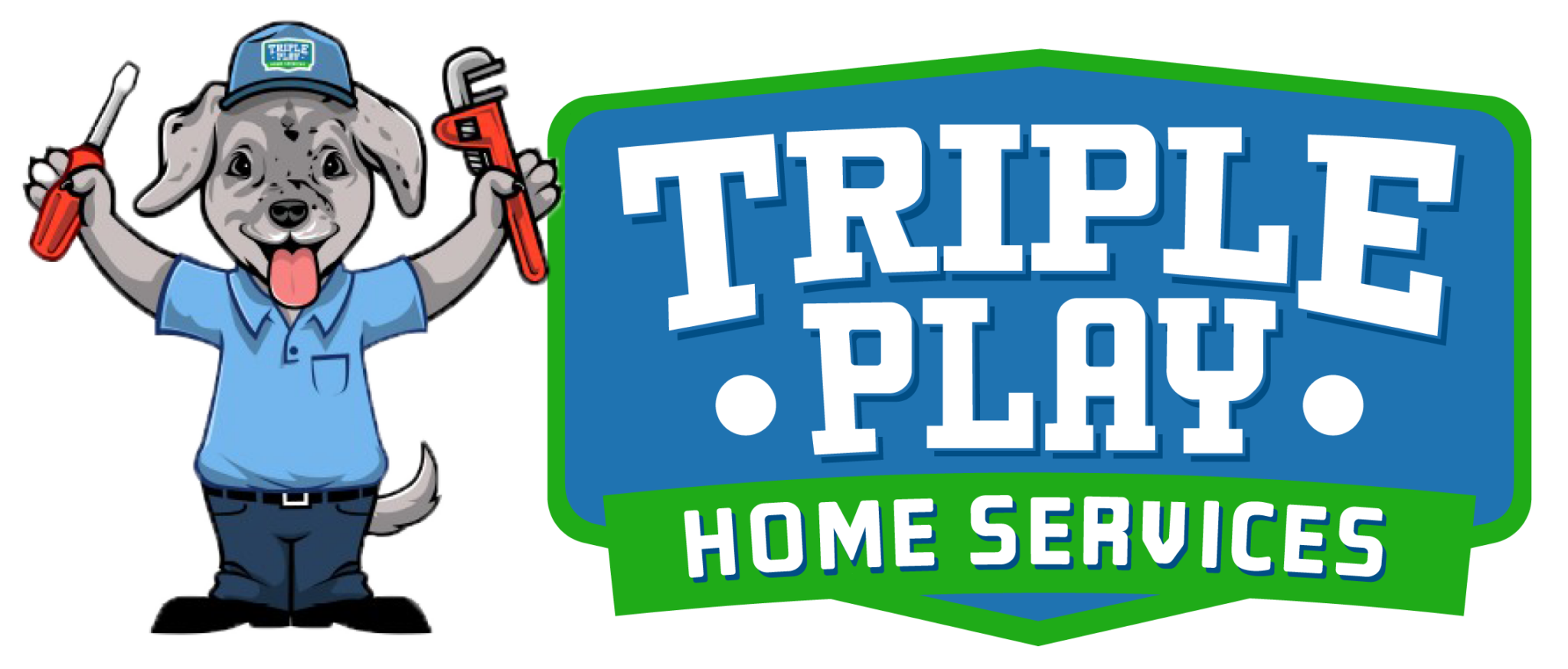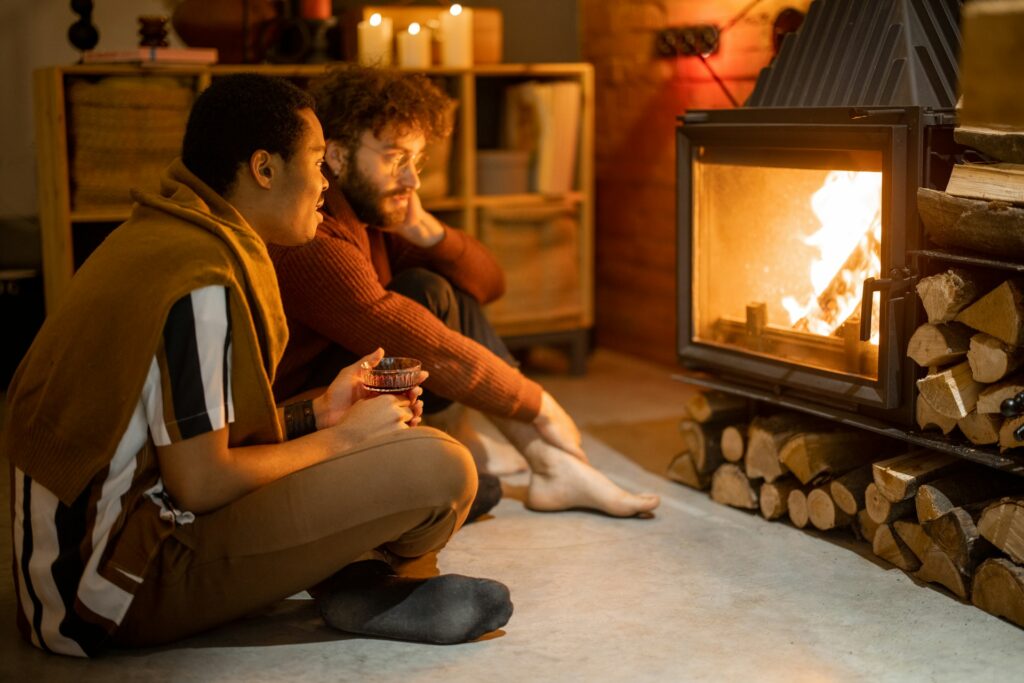Fireplaces add warmth and charm to any home, but using them safely is essential to prevent accidents. Proper preparation and safe operation are necessary steps to ensure your fireplace adds comfort without risks. Knowing how to maintain your fireplace and what to do in an emergency is also crucial for safety.
Preparing Your Fireplace for Use
Before using your fireplace, proper preparation ensures safety and efficiency. Our professionals recommend starting with a thorough inspection of the chimney. Check for any blockages such as bird nests, leaves, or debris that could obstruct the airflow. A blocked chimney can cause smoke to back up into your home, posing a health risk.
Next, make sure the damper is working correctly. The damper controls the airflow and vents smoke out of the chimney. Ensure it opens, closes, and seals properly. If the damper is damaged or not sealing well, it may need repair or replacement by our technicians.
Use only dry, seasoned wood for burning. Wet or green wood produces more smoke, increases creosote buildup, and is harder to burn efficiently. Creosote is a flammable substance that can line the chimney walls and pose a fire hazard if not regularly cleaned. Avoid burning trash, treated wood, or paper, as they can release harmful chemicals and cause dangerous flare-ups.
Safe Operation While Fireplace is Active
Operating your fireplace safely while it is active is essential to prevent accidents. Start by setting up a fire screen or glass doors to keep sparks and embers from escaping into the room. This barrier also protects children and pets from getting too close to the fire.
Maintain a safe distance between the fireplace and any flammable items, like furniture, rugs, and curtains. Keeping a three-foot clearance around the fireplace minimizes the risk of accidental fires. Never leave a fire unattended, especially if children or pets are present. Always extinguish the fire before leaving the room or going to bed.
Here are some additional safety tips while the fireplace is active:
1. Use Fireplace Tools: Utilize the proper fireplace tools to manage the fire safely. Tools like pokers, tongs, and shovels allow you to adjust logs without risking burns.
2. Open a Window: Ensure proper ventilation by cracking open a window. This prevents a build-up of smoke and carbon monoxide.
3. Don’t Overload the Fireplace: Avoid placing too many logs in the fireplace at once. Overloading can make the fire hard to control and increase the risk of spreading.
4. Monitor the Fire: Regularly check on the fire to ensure it is burning correctly. Adjust logs as needed to maintain a steady and manageable flame.
Regular Maintenance and Inspections
Regular fireplace maintenance and inspections are essential to ensure safety and efficiency. Our technicians recommend having your chimney and fireplace inspected by professionals at least once a year. This inspection helps identify potential problems like cracks in the chimney, creosote buildup, or other hazards that could lead to dangerous situations.
Cleaning is another crucial maintenance task. Even if you don’t use your fireplace often, debris and creosote can still accumulate. Our professionals can clean the chimney, removing soot and creosote that can ignite and cause chimney fires. Additionally, we check the flue for blockages to ensure proper ventilation.
Routine checks on the structural integrity of the fireplace are also important. Look for signs of wear and tear, such as cracks in the masonry or damage to the hearth. Repairs should be made promptly to prevent further issues. If you are unsure about any damage, our technicians can provide a detailed assessment and recommend the best course of action.
A well-maintained fireplace not only operates more efficiently but also enhances the safety of your home. Scheduling regular maintenance and inspections helps extend the life of your fireplace and ensures it remains a reliable source of warmth.
Emergency Procedures and Safety Tips
Being prepared for emergencies related to fireplaces is crucial for ensuring the safety of your home and family. Knowing what to do in case of a fireplace emergency can prevent minor issues from turning into significant disasters.
1. Keep a Fire Extinguisher Handy: Have a fire extinguisher rated for household fires close to the fireplace. In case of a small fire, you can quickly extinguish it before it spreads.
2. Install Smoke and Carbon Monoxide Detectors: Place smoke detectors and carbon monoxide detectors in areas near the fireplace. These devices alert you to dangerous levels of smoke or carbon monoxide, allowing you to take quick action.
3. Have an Emergency Plan: Create a clear plan for what to do if a fire occurs. Ensure all family members know how to safely exit the home and where to meet outside. Practice this plan regularly.
4. Use a Fireplace Screen: Always use a sturdy screen to prevent embers and sparks from flying out of the fireplace. This helps contain the fire and reduces the risk of accidental burns or fires.
Conclusion
Using your fireplace safely involves thorough preparation, understanding safe operation practices, maintaining the unit regularly, and knowing how to handle emergencies. Following these guidelines will help you enjoy the warmth and ambiance of your fireplace while ensuring the safety of your home and loved ones.
For expert and professional service for fireplaces in Village Hills, OK, trust the experts at Triple Play Home Services. Our professionals are ready to assist with inspections, maintenance, and any repairs you may need. Contact us today to schedule a service and ensure your fireplace is safe and efficient!


